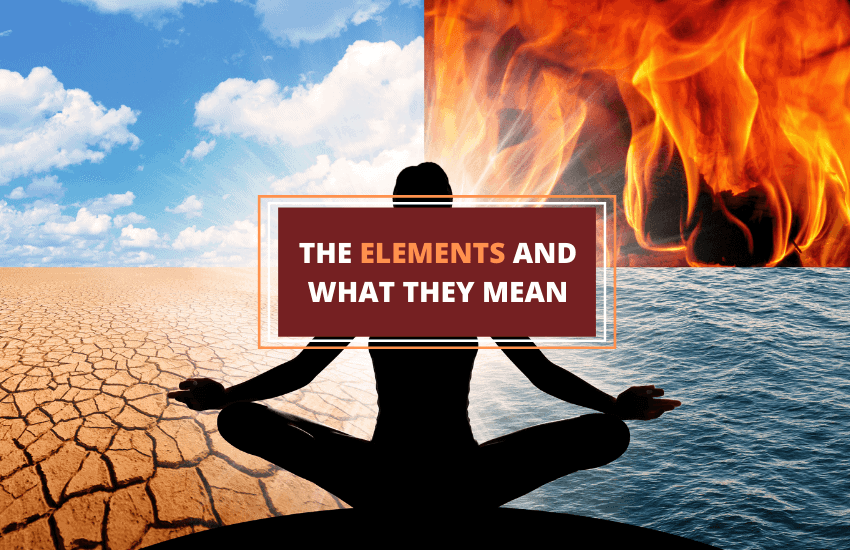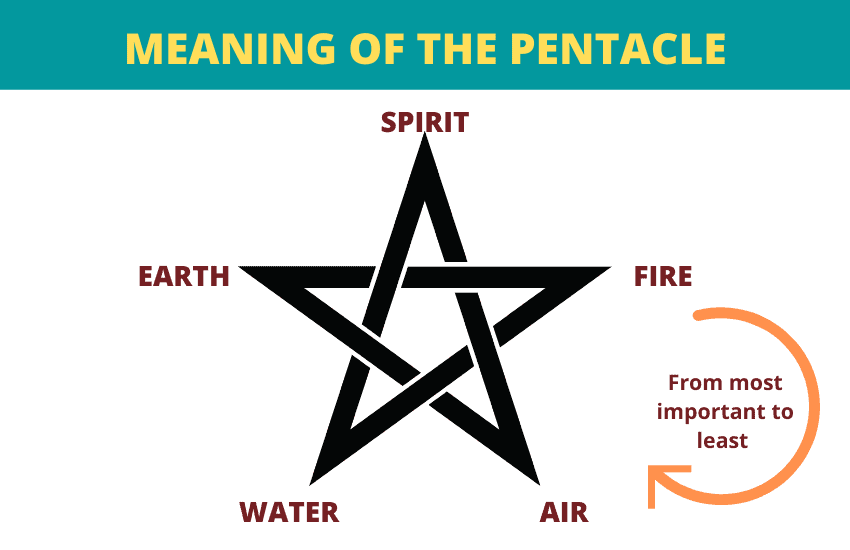
Table of Contents
The relationship between humans and the natural environment is celebrated in almost every culture throughout history. It’s evident in artifacts and art through the symbols used to represent the elements of fire, water, air, earth and sometimes spirit. Here’s a closer look at the elements and what they symbolize.
Classical Greek Elements
Ancient Greek philosophers popularized the idea of the classical elements of earth, fire, water, and air. Empedocles first described the elements in the 5th Century BC while attempting to discover the arche (or origin) of first matter. He deduced that the classical elements are the originator of all things, a philosophy that was shared by later Greek philosophers, Plato and Aristotle, although Aristotle added the fifth aether element to account for the (then) unknown matter that made up celestial objects. The Greek view of classical elements makes up the basis of medieval beliefs which influence Pagan interpretations of the elements.
The Elemental Pentagram

The Pentacle or Pentagram is a five-pointed star worshipped in pagan spirituality since the middle ages. The tip of the star represents the most important element, the spirit, or self. Moving clockwise from the spirit, the elements are placed in order of density – fire, air, water, and earth. The arrangement of the elements starting from the highest tip follows the traditional hierarchy of the most important material (spirit) to the least.
The pentagram is often enclosed in a circle to represent a protective womb and is used in rituals and worn as a symbol of protection from evil spirits.
Pagan and Wiccan Symbols
Each element is also represented by individual symbols in Pagan and Wiccan beliefs.
- Earth is symbolized by an inverted triangle with a line through the tip. It’s used to represent ideas of nourishment, prosperity, stillness, and rest. Its complete opposite is air, which is the same symbol inverted.
- Air is associated with communication, exchange, and ideas.
- Fire is symbolized by an upright triangle with no horizontal line passing through. It’s a powerful symbol of courage, lust, destruction, and renewal.
- Water is its opposite and is represented by an inverted triangle. It’s linked to ideas of cleansing, calm, healing, and introspection.
Alchemy
Alchemy is the medieval forerunner of chemistry and is a philosophical and scientific discipline. The basic elements of alchemy are air, earth, fire, and water and they’re denoted by the same triangular symbols as used in the Pagan and Wiccan traditions. In addition to these four elements, sulfur represented the combustible nature of matter and mercury represented metals.
These six elements were believed to be the smallest states of matter from which further objects could not be further reduced.
Astrology
The same triangular symbols are used in depictions of the elements in western Astrology. Elements are assigned to different signs of the zodiac and are believed to influence personality traits.
- Aries, Leo, and Sagittarius are fire signs. People influenced by the fire element are described as spontaneous, emotionally intelligent, and have an active imagination.
- Libra, Aquarius, and Gemini are air signs. They are believed to be intellectually driven, analytical, and possess a higher ability to reason.
- Cancer, Scorpio, and Pisces are water signs. People ruled by water are thought to be sensitive, emotional, and imaginative.
- Capricorn, Taurus, and Virgo are earth signs. They tend to be deeply rooted in their ways, resistant to change but also have an outstanding ability to endure.
Four Humors
The Greek Philosopher Hippocrates is credited as the father of medicine due to the many discoveries he made relating to the workings of the human body in the classical period between 510-323 BC.
The four humors were believed to be the four fluids of the human body, and each of these was related to a classical element.
- Blood was related to air
- Phlegm was related to water
- Yellow bile was related to fire
- Black bile was related to earth
The balance and purity of the four humors were believed to be the key to good health.
As the mind and body are connected, it was believed that the four humors were linked to displays of temperament.
- Blood and air are associated with the sanguine dispositions to be lively, enthusiastic, and sociable.
- Black bile and earth are melancholy, and like the modern use of the word, are associated with moodiness and depressed emotions.
- Phlegm and water are apathetic and have little interest or enthusiasm.
- Yellow bile and fire are aggressive and show signs of derangement and hostility.
Hinduism
The elements in Hinduism are called the five great elements, or Pancha Mahabhuta. In Ayurveda (a holistic healing system), the human body is thought to be made up of these five elements.
- The spirit element is known as the space element and is associated with the middle finger, ear, and sense of hearing.
- The air element is associated with the index finger, nose, and sense of smell.
- The fire element is associated with the thumb, eyes, and sight.
- The water element is associated with little finger, tongue, and taste.
- Finally, the earth element is associated with the ring finger, skin, and sense of touch.
Chinese Astrology
Chinese culture also places great importance on the five elements, but they are different to those of Western culture, being wood, fire, earth, metal, and water. These elements are believed to be fundamental to all matter and interactions in the universe. The five elements are called Wǔ Xing (pronounced woo sshing) and are an important part of different Chinese philosophies.
In Chinese Astrology, each of the elements is likened to a classical planet and a heavenly creature.
- Wood is associated with Venus and the Azure Dragon. It represents creativity, flourishment, luxury, and the virtue of benevolence.
- Fire is linked to Jupiter and the Vermillion Bird. It represents enthusiasm, passion, and the virtue of propriety.
- The earth element is linked to Mercury and the Yellow Dragon. It represents stability, nourishment, and the virtue of honesty.
- Metal is linked to Mars and the White Tiger. It represents ambition, persistence, progress, and righteousness.
- Water is linked to Saturn and the Black Tortoise. It represents mental strength, aptitude, and the virtue of wisdom.
Chinese Zodiac
Each Chinese element is also linked to a zodiac sign and is associated with a month of the traditional Chinese solar calendar, and season (apart from earth which is associated with the change between seasons).
- Wood marks spring and the Tiger and Rabbit zodiac signs
- Fire marks summer and the Snake and Horse signs
- Earth marks each season change and the Ox, Dragon, Goat, and Dog signs
- Metal marks autumn and the Monkey and Rooster signs
- Water marks winter and the Pig and Rat signs
Feng Shui
The elements play an important role in Feng Shui – the Chinese philosophy of balancing energy in a space. Each element is associated with a color and shape.
- Wood is associated with the color green and rectangles
- Fire is linked to red and angular shapes
- Earth is related to yellow and squares
- Metal is associated with white and round shapes
- Water relates to black and undulating shapes
Japanese Buddhism
In Japanese Buddhism, the five elements are known as the Five Great Elements, or Godai. The five elements are earth, water, fire, wind, and void (akin to air).
- Earth represents solid objects that are resistant to movement or change. It’s linked to the characteristics of being stubborn or confident.
- Water represents formless, fluid things. It’s associated with the characteristics of adaptability and magnetism.
- Fire is symbolic of energetic things, passion, and desire.
- Wind represents things that can grow and move. It’s linked to having an open mind, wisdom, and compassion.
- Void can also mean sky or heaven and represents things that transcend everyday human experience. It’s linked with creativity, communication, spontaneity, and inventiveness.
Godai is often adapted in Japanese Buddhist architecture through Gorinto towers. These are buildings (usually temples) with five levels that represent the elements.
The Circle
The elements of air, fire, water, and earth are depicted as a collective by many indigenous North American tribes. Though the meaning and exact symbol can differ between tribes, the overall representation is similar. It’s usually represented by a circle divided into four equal segments by a cross. This is sometimes called the medicine wheel.
Four is a sacred number in many North American tribes, so the four sections often relate to the elements as well as numerous other important ideas. These include the four cardinal directions, the sages of life, seasons, colors, heavenly bodies (stars, sun, earth, and moon), and significant animals (bear, eagle, wolf, and buffalo).
The enclosing circle is related to ideas of connectedness, balance, and the all-encompassing influence of Mother Earth.
Wrapping Up
The elements have played a significant role in cultures and traditions around the world. If you want to learn more about the symbolism of the elements read our comprehensive article here.








